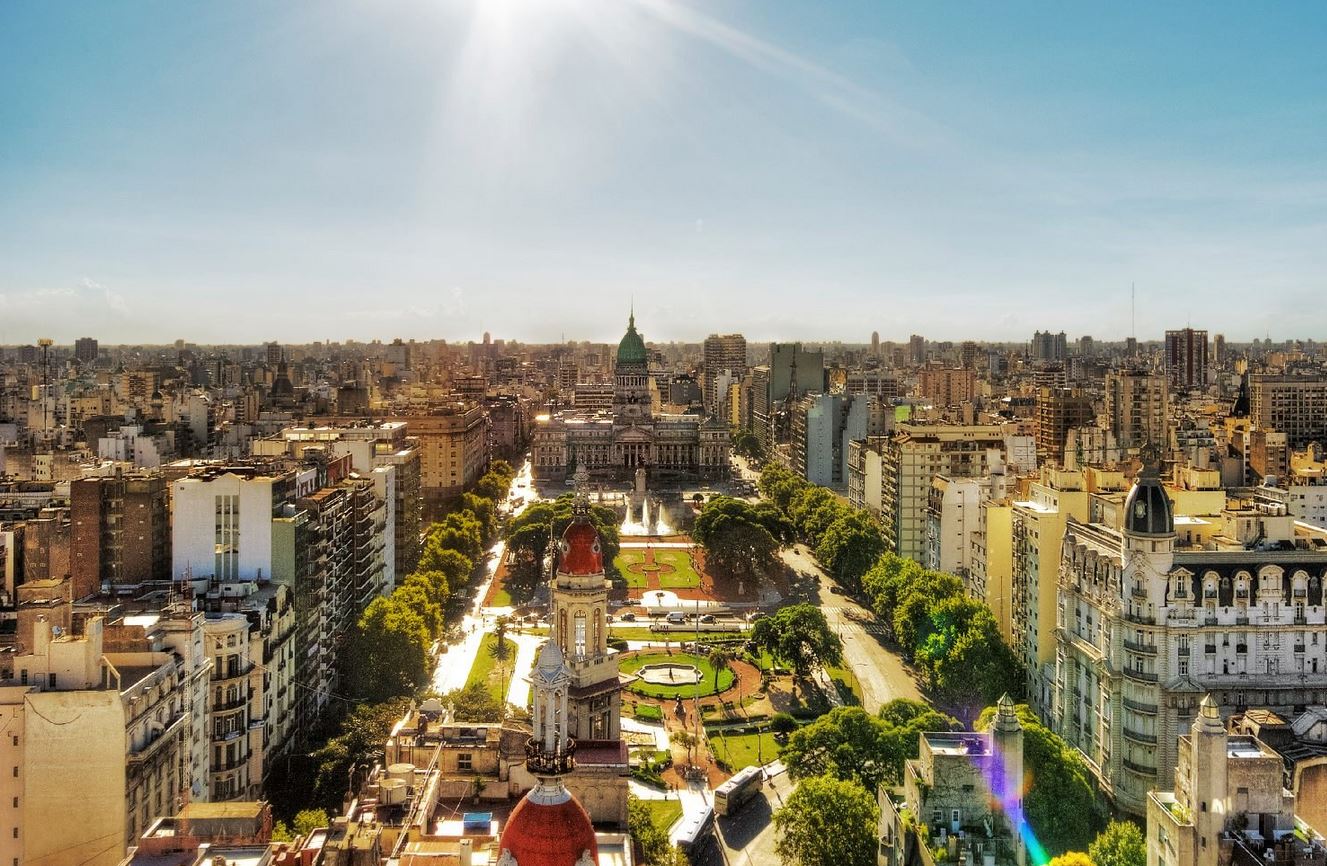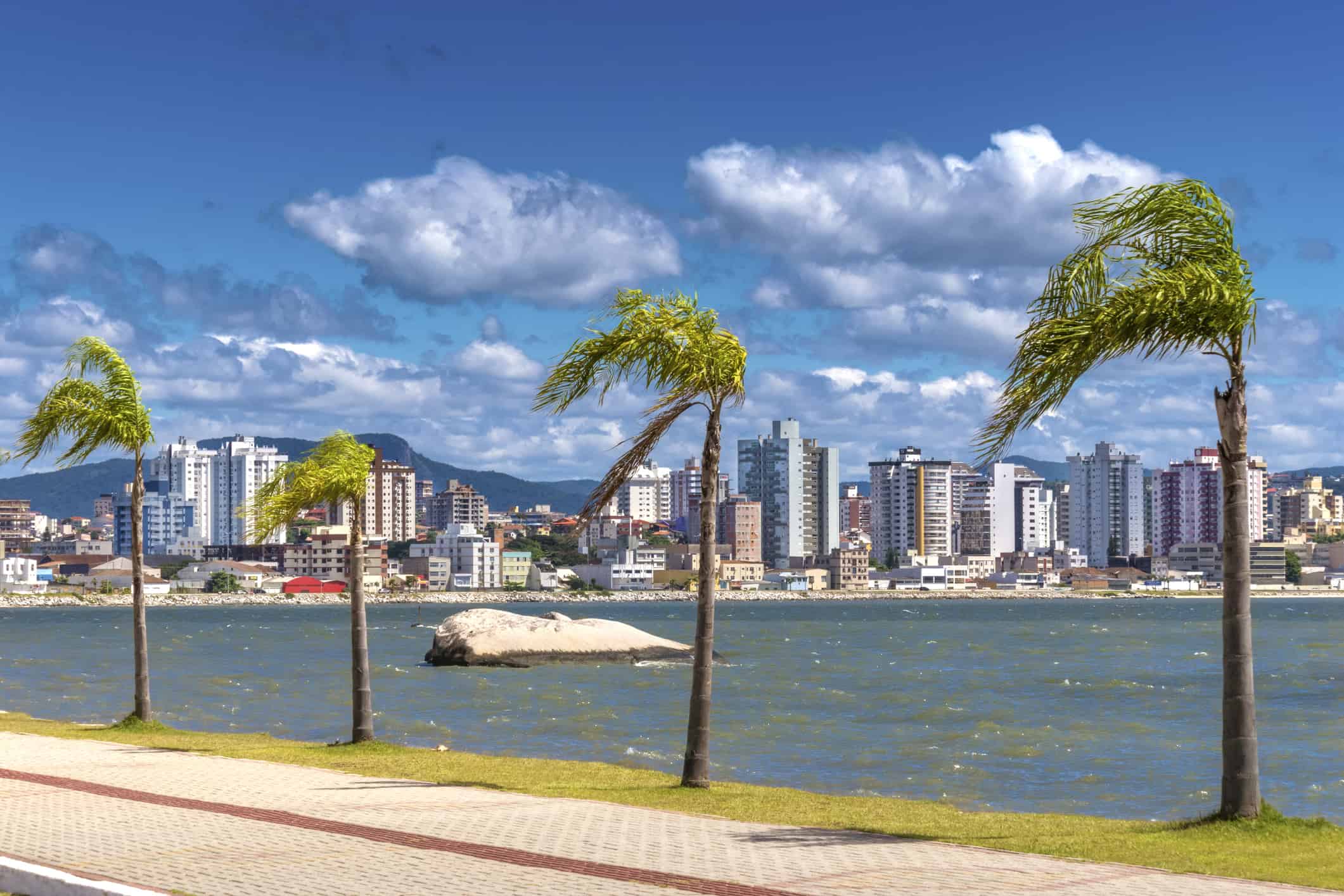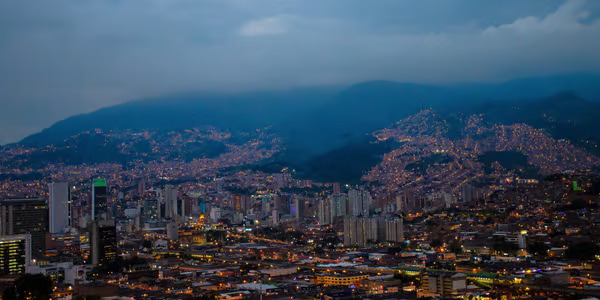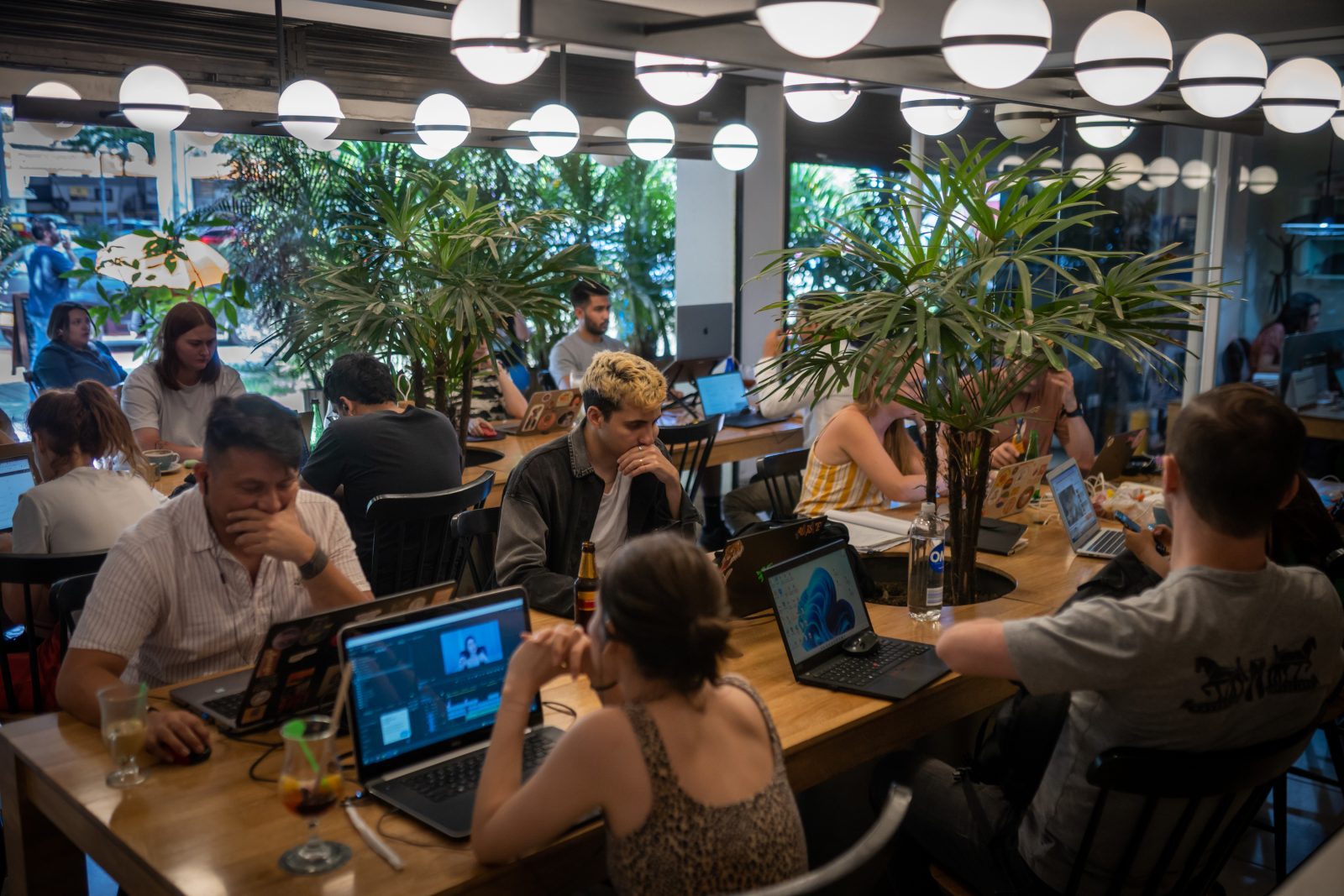Cities like Canggu and Medellín are attracting tech workers as digital nomads, leading to local complaints about being priced out due to their transient lifestyle.
Medellín is one of the latest hot spots to join a global nomad circuit that spans tropical latitudes.
Southeast Asia remains the preferred destination for nomads — on the popular website Nomad List, four of the top 10 cities are from the region.
The list also features less expensive European cities in Portugal and Romania, as well as Latin American destinations like Mexico City, which share time zones with the U.S.
The typical nomad might visit 12 or 13 countries a year while holding down a corporate job, usually in the tech sector.

Within these cities, nomads cluster in safe and prosperous neighborhoods. Laureles, in Medellín, is a tranquil barrio with a university, clean streets, and middle-class inhabitants.
However, the income differential between the nomads and the Colombian professional class is immense.
RENTAL PRICES SKYROCKET
The result is runaway price inflation — rents in Laureles have skyrocketed, and restaurants cannot raise their prices fast enough.
A one-bedroom in Medellín now rents for the “gringo price” of about $1,300 a month in a country where the median monthly income is $300.
An identical development can be observed in Florianópolis, the ravishingly beautiful and secure capital of Brazil’s Santa Catarina state.
Just 3 years ago, before the pandemic began, Luiz could not rent out his house in the north of the city, even though he only asked for 1,500 reais (US$300).
Now he wants 3000 reais for it, and interests are lining up. All digital nomads.
The city’s traditional residents are forced to retreat to less attractive suburbs, while the most beautiful locations are rented out to digital nomads for top prices.
GROWING RESISTANCE
An influx of digital nomads into a neighborhood can distort the local economy. Seeking foreign cash, many cities invite this kind of visitor, but their arrival can skew residents’ living costs.
Medellín is still in the early stages of nomadification — the last year has seen a boom in arrivals, according to data collected by Nomad List.
In some hot spots, nomads are starting to meet greater resistance. In Latin America, Mexico City is the epicenter of the nomad boom.
Relaxed Covid-19 policies in 2021 led to a rush of influencers advertising the lifestyle, and the appeal was especially attractive to U.S. citizens, who can stay in Mexico on tourist visas for up to six months.
After that, they need a special temporary residence permit — between 2019 and 2020, the country saw an 85% increase in U.S. citizens who asked for one.
In 2022, 2,305 temporary residence permits for Mexico City were granted to U.S. citizens, according to the National Migration Institute, up from the 1,417 granted in 2019.

The increase in nomads has become a flashpoint in debates over the city’s housing problems. “[The presence of foreigners] primarily affects the economic livelihood of the regular person here,” said Arturo Mares, a clerk at a furniture store in the upscale Roma Norte neighborhood.
“Costs are rising because these people spend a lot of money here since they think everything is cheap.” In November, people took to the streets of Mexico City to protest gentrification and rising rents.
Some governments are making moves to defend against similar concerns. In March, just five months after the country launched a digital nomad visa, Portugal curtailed licenses for Airbnbs to calm rising housing costs.
In Bali, one of the earliest and most enduring digital nomad destinations, local politicians have viewed nomads with an increasingly skeptical eye.
The digital nomads’ visits are transitory, leaving neighborhoods permanently transformed.
Today, there are streets in Medellín, as in Mexico City or Canggu, that look more like Bushwick — where English is more common than the local language and where the streets are dotted with brightly painted coworking hubs and prissy restaurants serving international cuisine.
The more nomads arrive, the more these locations resemble one another. Building exteriors retain their historical character, but interiors converge to a sterile homogeneity of hotdesking, free charging outlets, affordable coffee, and Wi-Fi with purchase.
It is difficult to determine how many workers currently qualify as digital nomads. The most credible number comes from Nomad List, the subscription-based social network.
Every digital nomad I spoke with used it. Extrapolating from its user base, Nomad List projects that there are currently about 7,600 remote workers in Medellín and 265,000 check-ins globally.
The increase in nomads has become a flashpoint in debates over the city’s housing problems. “[The presence of foreigners] primarily affects the economic livelihood of the regular person here,” said Arturo Mares, a clerk at a furniture store in the upscale Roma Norte neighborhood.
“Costs are rising because these people spend a lot of money here since they think everything is cheap.” In November, people took to the streets of Mexico City to protest gentrification and rising rents.
Some governments are making moves to defend against similar concerns. In March, just five months after the country launched a digital nomad visa, Portugal curtailed licenses for Airbnbs to calm rising housing costs.
In Bali, one of the earliest and most enduring digital nomad destinations, local politicians have viewed nomads with an increasingly skeptical eye.
The digital nomads’ visits are transitory, leaving neighborhoods permanently transformed.
Today, there are streets in Medellín, as in Mexico City or Canggu, that look more like Bushwick — where English is more common than the local language and where the streets are dotted with brightly painted coworking hubs and prissy restaurants serving international cuisine.
The more nomads arrive, the more these locations resemble one another.
Building exteriors retain their historical character, but interiors converge to a sterile homogeneity of hotdesking, free charging outlets, affordable coffee, and Wi-Fi with purchase.
It is difficult to determine how many workers currently qualify as digital nomads. The most credible number comes from Nomad List, the subscription-based social network.
Every digital nomad I spoke with used it. Extrapolating from its user base, Nomad List projects that there are currently about 7,600 remote workers in Medellín and 265,000 check-ins globally.

A survey of Nomad List users showed that about half are from the U.S., a third from Europe, and the rest from all over the world.
In its 2023 report, Brazil and India ranked highest for users outside of the U.S. and Europe. Medellín is somewhat unusual on the digital nomad circuit.
To locals, it is the “City of Eternal Spring,” with temperatures around 21 degrees Celsius year-round. It is a visually splendid place, somehow both urban and forested at the same time, with thousands of concrete high-rises dotting the slopes of a leafy Andean valley.
But Medellín was once the cocaine capital of the planet and once the most murderous city in Latin America.
Drug trafficking remains a linchpin of its economy; the U.N. estimates that Colombia now exports more cocaine than ever.
The violence has abated in recent years, but the city is not the safest. Of the 25 most popular destinations on Nomad List, it is the only one with a kidnapping advisory from the U.S. State Department.
That hasn’t stopped tech workers from congregating here. Nicholas Austin, a 29-year-old software salesman who rented a desk on the second floor of Semilla, said he wasn’t interested in drugs; he liked salsa dancing.
In San Francisco, he’d been offered a job paying $250,000 a year working for Uber. He’d turned it down, taking a $100,000 pay cut to stay with a firm that let him remain nomadic.
Austin admitted that the pay cut stung, but his rent was a quarter of what it would have been in the Bay Area, and a six-figure income in Medellín placed him in Colombia’s upper class.
“I have to remind myself that I can go out to eat at every meal, and it’s less than I would pay for a sandwich in San Francisco,” he said.
Looking to move beyond the city’s notorious reputation, Medellín’s civic leaders have welcomed the nomads.
Claudia Heredia, who heads the Medellín Convention and Visitors Bureau, hoped the nomads would stay and invest.
“The influx of foreign money ultimately benefits everyone,” she said. The downside is that digital nomads are driving up costs around the city.
Restaurants have been especially affected. “We ordered, like, four desserts!” one said. “We couldn’t even break 90 bucks.”
Locals can’t keep pace with such decadence; even the head of the city’s tourism board was being priced out. “I used to go out to eat every Friday,” Heredia said.
“Only at current prices, I can’t afford to.” And yet Heredia supported hosting nomads in the city. In fact, she said she was hoping more would arrive.
“Yes,” she said, “but it’s better for the economy.” Some of the other residents shared Heredia’s perspective.
Félix Villarreal, a Laureles local, had a positive view of the digital nomads. “They are very friendly, very polite. They’re really interested in our culture, which leads to a nice interchange,” he said.
A 39-year-old IT engineer observed that some of his foreign counterparts earned many times what he did. “Of course, I would like to earn that income myself,” he said.
“But that’s reality. You can’t change it.” Last October, Colombia introduced a special visa for digital nomads. Those who prove they are remotely employed can work for up to two years in the country.

More than 50 countries have recently introduced similar digital nomad visas, seeking to legitimize what had previously been informal “workcations.”
Mauricio Toro, the congressman behind the nomad visa introduced in an entrepreneurship bill, is well-dressed, charismatic, and articulate; he was also the country’s first openly gay legislator.
“We realized that this project would benefit more people than we initially imagined,” he said in a video call from Bogotá, stressing that the bill was developed by a committee that included members of all political parties.
In Medellín, I heard plenty of complaints about rising rents, particularly in the trendy neighborhoods of Laureles and El Poblado, but not much explicit opposition to the nomads themselves.
“This is Medellín,” one activist told me. “We don’t protest unless there are bodies in the streets.” Emily Sánchez, a 44-year-old dance instructor living in Laureles, told Rest of World that most of her students are now foreigners.
“It’s very positive for my work, which relies on foreign income,” she said. “But it’s no lie that food and rents have become much more expensive.”
She observed that Medellín’s rental bureaucracy actually encourages the spread of digital nomads.
“When you rent to a local tenant, there’s a mountain of paperwork,” she said. “So what happens? The property owners switch to Airbnb.”
For some, the arrival of a new sort of foreigner, less interested in drug violence and more interested in Wi-Fi, was a welcome change. “I love the digital nomad visa,” said Lorena Lizarazo, a 28-year-old actress who lives in Laureles.
“I feel like it opened the doors for so many people to see the good things the city offers.” She observed that many travelers only associated Medellín with narco-trafficking.
“Media and television just continue to portray that side of us. That is not our reality.”
There is also the experience of neighboring Venezuela to consider, where the successive regimes of Hugo Chávez and Nicolás Maduro have produced authoritarianism, repression, and near-total economic collapse — 1.8 million immigrants have left Venezuela for Colombia.
Toro, who is no longer in office, suggested that the arrival of nomads would benefit workers in the local economy, but this is the result of a grotesque wealth disparity.
Mexico City has seen more organized resistance to digital nomads. One flashpoint occurred in 2022 when Becca Sherman, a tech founder from Austin, Texas, tweeted, “Do yourself a favor and remote work in Mexico City — it is truly magical.”
She attached a photograph of Pasaje Parián, a recently renovated arcade full of hip stores and restaurants whose waiters greet you in English.
Sherman’s perception of the city was poorly received by locals, who complained about nomads transforming beloved neighborhoods into more expensive, English-centered spots.
Sherman deleted the tweet following the backlash, but it was later repurposed as an ironic meme focusing on uncomfortable Mexico City situations like hypercrowded subway rides or intense earthquakes.

Anti-gentrification activists later protested the rising costs of living. But in October 2022, Claudia Sheinbaum, Mexico City’s left-wing mayor, signed a deal with Airbnb to promote “creative tourism,” igniting another wave of protests and social media criticism.
31,000 The number of free Wi-Fi hot spots in Mexico City José Ignacio Lanzagorta, a lecturer at the Claustro de Sor Juana University in Mexico City, said he sees the impact of digital nomads through the lens of “touristification” rather than gentrification.
Lanzagorta said tourist-friendly areas are often gentrified to begin with, usually by locals. Condesa and Roma Norte, Mexico City’s nomad hot spots, were both built in the early 20th century and home to many art deco buildings—they were never cheap.
However, there is a considerable and growing percentage of short-term rentals through Airbnb in these areas, he said. Even as touristification drives up rents, some complain it can also destroy the character of neighborhoods and lead to exploitation.
In El Poblado, the formerly artsy district of Medellín, painter Brian Sánchez said that sexual tourism had become a problem in the area.
“The nomads bring a lot of good ideas, and they popularized this place via social media, but that brought a different sort of tourist,” said Sánchez, who was priced out of his studio after his rent more than doubled to $1,500 a month.
Jacquie Wortley, a nomad currently in Medellín, said the income disparity between digital nomads and locals could lead to opportunistic relationships.
“Because of that income power play, maybe they’ve never had that type of power over women in their lives before. And they can take advantage of it.” Bali is perhaps nearing the end stage of touristification.
The hot spot on the island is Canggu, a coastal village known for its restaurants and cafes, clubs, bars, gyms, and dozens of coworking spaces.
Bali sees millions of tourists annually and has long struggled with their distortionary impact.
Locals say the worst tourists tend to be rowdy Australians and disrespectful Russians, but Bali was also the site of a high-profile scandal involving American nomads in 2021.
However, a common complaint in discussions about digital nomads in Bali is that they are taking jobs from locals.
“People are worried because every day they read news about tourists behaving badly and taking a local job,” said I Ketut Wardana, a board member of the Indonesia Travel Agent Association in Bali.
Like Colombia and Mexico City, Indonesia has considered issuing an explicit “digital nomad” visa for the past two years. It has not yet arrived.

